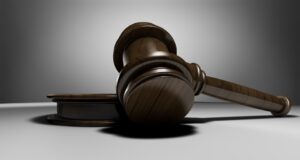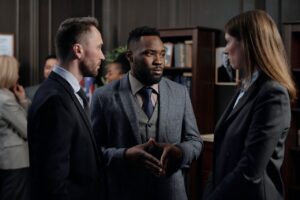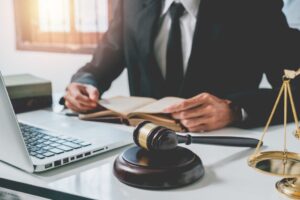Did you know that distracted driving is considered the number one cause of fatal accidents?
Left turn accidents can be incredibly serious, and if the other driver is at fault, that means you don’t have to foot the bill for repairs to your vehicle or your medical bills.
Read on to learn more about what it means to be at fault for a left turn accident, as well as some suggestions on how to fight your case!
Concept of Negligence in Left Turn Accidents
Negligence is the failure to do what a reasonable person would do in the same situation and is often a major factor in motor vehicle accidents such as left turn accidents. Depending on the specific facts of the accident, either the driver attempting to make the left turn or the driver on the straightaway can be found to be negligent.
The party found to be negligent can then be held liable for any injuries or vehicle damage that occur as a result of the accident. To determine fault in a left turn accident, factors such as speed limits, the timing of the turn, and visibility must all be taken into account. The party deemed to be most negligent will be held responsible for the accident.
Investigating Which Party is Typically Found at Fault
When investigating a left-turn accident to determine which party is at fault, the responsibility typically lies with the driver making the left-hand turn. This is because the other driver on the right side is presumed to have the right-of-way and the left-turn driver must yield to them.
To determine if they are acting safely and prudently, the insurance company will examine factors like the speed of both cars involved and the traffic patterns at the time of the accident. Visibility, the angle of approach, or weather conditions can also be considered.
Factors that Play a Role in Determining Liability for Left Turn Accidents
If a driver is deemed to have violated any legal driving rules, this will be taken into account. All of these factors have an impact on who is to be held accountable in a left-turn accident, and understanding each one helps provide a more complete picture of who is at fault in this type of crash.
Right of Way at the Intersection
If the left-turning vehicle does not yield or fails to take caution, causing an accident with the oncoming traffic, that vehicle would be at fault for the accident. Similarly, if the oncoming vehicle has the right of way but fails to yield or take caution, it would be at fault.
Speed of the Vehicles
If the driver of one of the vehicles was traveling too fast and was unable to safely make the turn, they are likely at fault. If, however, both vehicles were traveling within the posted speed limit, the vehicle that failed to yield would be at a car accident fault.
Attention of the Drivers
Attention of the drivers is paramount when making a left-turn move. Knowing who is at fault during a left-turn accident is dependent on various factors. The driver looking to make the left turn must take necessary caution to ensure the turning lane is free of any vehicles or any other obstructions, including pedestrians or bikers.
Use of Signal Lights
When making a left turn, a driver needs to use their signal lights to inform other drivers of their intentions. When signal lights are not used, it can lead to an accident. If a driver fails to use their signal lights to indicate their left turn and the other driver fails to notice it, both drivers are at fault.
Dangerous Driving
When it comes to left-turn accidents caused by dangerous driving, both drivers share responsibility for the accident. If a driver attempts a dangerous left-turn maneuver and collides with another vehicle, that driver is liable for any resulting injuries or damages.
Unforeseen Circumstances
There are unexpected, unforeseen elements, such as weather conditions, poor lighting, and traffic congestion. These can also contribute to an accident. The unexpected can greatly change the circumstances and outcome of an accident.
For example, a driver may be distracted by a car halted unexpectedly at an intersection, resulting in a collision. In such a situation, the responsibility for the accident could be shared as unforeseen circumstances were also present.
In cases where the other party is at fault, the claimant must be able to provide evidence of the unexpected condition that caused the crash in order to demonstrate that the other party is responsible.
Visibility of the Vehicles
When one vehicle fails to give way to the other or makes an unsafe turn, the risk of a collision increases exponentially. If the vehicles were not visible due to darkness, poor lighting, or environmental conditions, then the driver turning left could be deemed at fault for the accident.
Influence of Drugs or Alcohol
In a left-turn accident where the driver was under the influence of drugs or alcohol, the driver is primarily at fault. This is because the drug or alcohol impairs the driver’s judgment, reaction time, and ability to make sound decisions when operating a vehicle.
If you are looking for professional help, click for more information.
Read More About Left Turn Accident
The results of a left turn accident can be devastating, and it is important to understand who is at fault.
All drivers have a duty to take every precaution to avoid an accident, but the driver making the left turn is ultimately liable for any resulting damage or injuries.
If you’ve been in a left turn accident, speak with an experienced car accident lawyer right away.
Did you find this article informative? Check out the rest of our blog for more!




